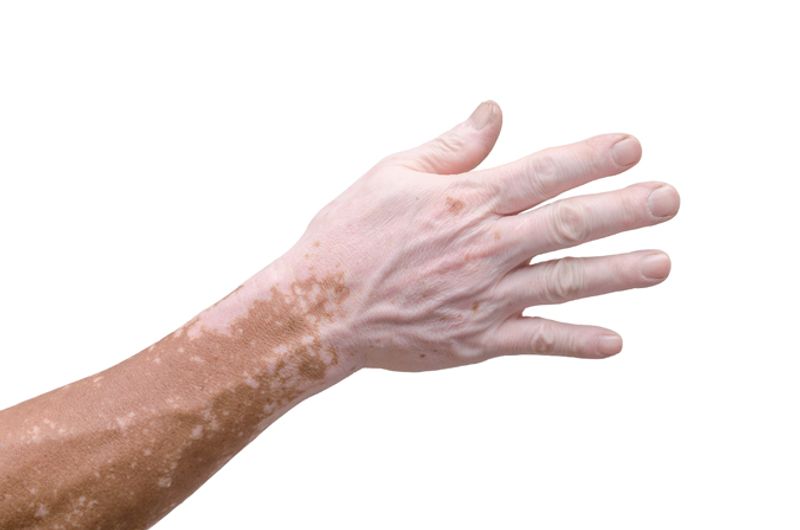Informative guide details prescribing topical ruxolitinib to treat segmental vitiligo
Key takeaways:
- Patients applying topical ruxolitinib twice-daily saw better outcomes than those applying once-daily (15% vs. 10%).
- A program called IncyteCARES may assist eligible patients that cannot pay for this treatment.
Researchers created a comprehensive guide about the pharmacology, efficacy, safety and patient cost options of topical ruxolitinib for the treatment of nonsegmental vitiligo.
In July 2022, the FDA approved ruxolitinib 1.5% cream, a topical Janus kinase (JAK) inhibitor, for the treatment of nonsegmental vitiligo in patients aged 12 years and older, making it the first drug to ever be approved for repigmentation in patients with vitiligo.

“Ruxolitinib can be used topically up to 60 g in 1 week, or 100 g over 2 weeks on less than or equal to 10% body surface area,” Meghan C. Grossmann, BS, of the center for dermatology research in the department of dermatology at the Wake Forest School of Medicine, and colleagues wrote.
Being a pioneer treatment in this indication and a JAK inhibitor, Grossmann and colleagues set up a formal review to describe the pharmacology, clinical trials, safety and efficacy of ruxolitinib in the treatment of vitiligo.
Pharmacology
Ruxolitinib is a selective JAK1 and JAK2 inhibitor with a mechanism of action still under evaluation in an ongoing clinical trial, according to the study.
When researchers in a prior study looked at the pharmacokinetics of topical ruxolitinib in 41 patients aged 13 years and older using 1.5 mg/cm2 ruxolitinib twice daily for 28 days, they found that 97% of the drug was protein-bound in plasma and metabolized in the liver.
Further, there was no evidence of metabolites in the patients’ plasma after 28 days.
Clinical trials and efficacy
Two phase 3 trials and one phase 2 trial evaluated topical ruxolitinib in this indication. Additionally, there is a current trial underway assessing the long-term efficacy and safety of ruxolitinib.
The two phase 3 randomized, double-blind trials evaluated the safety and efficacy of ruxolitinib 1.5% cream applied twice daily for an initial 24 weeks and a 28 week extension period compared with vehicle. After 52 weeks, results showed that 52% of subjects had at least 75% improvement in their Facial Vitiligo Area Scoring Index.
In the phase 2 randomized, double-blind, 52-week study, 10% of patients applying the drug once-daily achieved at least a 75% improvement in Total Vitiligo Area Scoring Index compared with 15% that applied twice-daily.
Safety
Many practitioners continue to be wary of prescribing JAK inhibitors to patients due to a host of associated adverse events including risk for infections, thrombotic events, blood disorders, major cardiovascular events and other malignancies. However, compared with oral JAK inhibitors, topical JAKs have minimal systemic accumulation, according to the study.
Grossmann and colleagues reported topical ruxolitinib is considered safe, with the most common side effects being acne, pruritus, application site redness, nasopharyngitis, headaches, urinary tract infections and fever.
Cost
“Cost is a drawback of ruxolitinib,” Grossmann and colleagues wrote, with a 60-gram tube of 1.5% cream costing more than $2,000. However, there are options for eligible patients.
Those with commercial prescription insurance may only need to pay a copay of $10. If a patient’s commercial insurance denies coverage, a program called IncyteCARES could approve that patient to receive 12 months of free medication.
If the patient is uninsured or underinsured with Medicare and cannot afford their copay, IncyteCARES may be able to assist if they meet certain income eligibility criteria.
